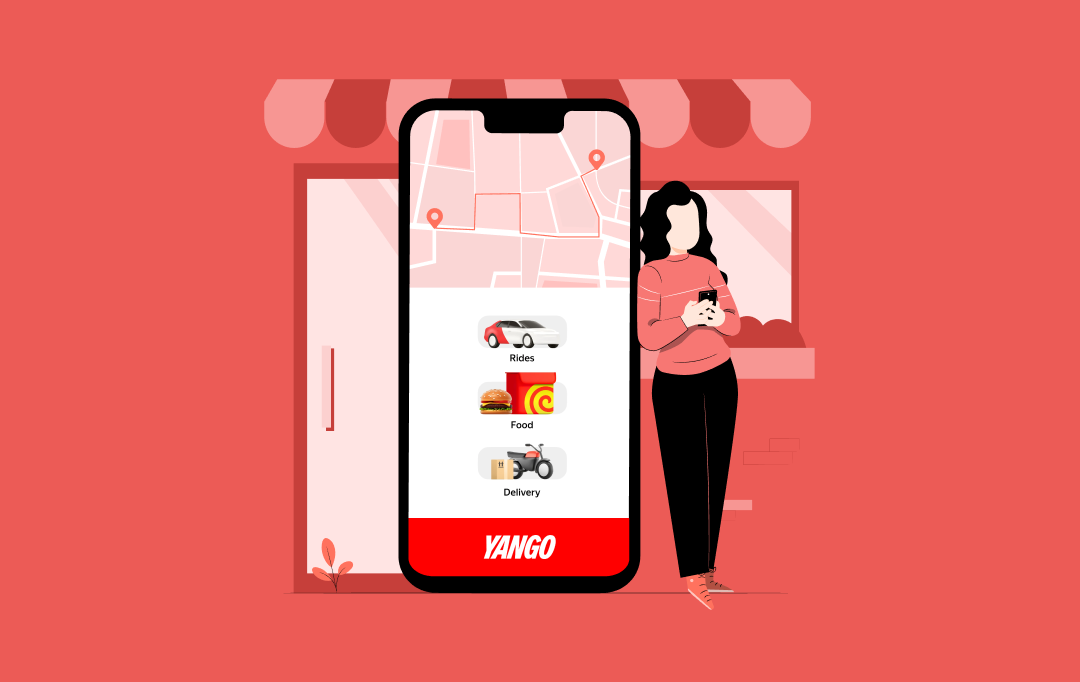- Understanding CI/CD for Mobile Apps
- What is Continuous Integration?
- What is Continuous Delivery?
- Stages of CI/CD for Mobile Apps Development
- Code
- Build
- Test
- Package
- Release
- Configuration
- Monitor
- What Constitutes a CI/CD Pipeline?
- Business Benefits of CI/CD Implementation in Mobile Apps
- Faster Feedback Loop
- Increased Visibility & Transparency
- Avoidance of Integration Mess
- Identification & Solving of Issues Early On
- Improve Testability & Quality
- Top Mobile CI/CD Tools
- Jenkins
- CircleCI
- Travis CI
- Bitrise
- Visual Studio App Center
- How Do You Select the Best CI/CD Tool for Your App Development Needs?
- Proprietary vs. Open Source
- In the Cloud or Self-Hosted
- Ease of Setting Up
- CI/CD Best Practices for Mobile Apps
- Automated Testing
- Version Control
- Frequent Code Integration
- Automated Builds
- Continuous Testing
- Feedback Loop
- Security Considerations
- CI/CD and Appinventiv: How Can We Help?
- FAQs
In a software-dominated era, one of the most formidable challenges faced by multiple software companies across the globe revolves around the timely delivery of products within established deadlines. What if there was a transformative tool that could streamline the entire process?
Well, we are talking about CI/CD for mobile apps. Referred to as Continuous Integration and Continuous Delivery (CI/CD), the approach has gained widespread attention within the software development ecosystem, all thanks to its numerous benefits. Major research has underlined the advantages of adopting CI/CD, offering accelerated iteration cycles, heightened quality assurance, and seamless deployments.
Implementing a CI/CD pipeline can save businesses up to 20% of mobile app development time. By automating testing, integration, and deployment stages, CI/CD detects issues early, prevents bottlenecks, and delivers updates quickly to users. This workflow minimizes manual tasks, encourages collaboration, and prioritizes innovation, resulting in efficient and timely app delivery.
Still, the mobile application development ecosystem presents a distinct set of dynamics and has its intricacies when it comes to businesses of different niches and sizes.
If you are a business looking to implement CI/CD for mobile apps, this comprehensive guide will help you understand the approach in detail. In addition to looking at the CI/CD role in mobile app development, we will also help you understand the insights into how to effectively integrate it into your development workflow.
Understanding CI/CD for Mobile Apps
In a sans CI/CD world, some mobile app development companies in Singapore release their apps manually by handing them off from one team to the next.

Because of this, delays are common in multiple phases of app development, resulting in frustration among teams and clients. Consequently, the app deployment is rushed, at times leaving a room for error, significantly impacting the overall potential for revenue generation.
Looking at the continuous delivery pipeline illustration below, you will get a different picture.
It depicts how the developers write their code and commit it to a source code repository once/multiple times daily. Following this, testing, staging, and production happen inside the CI pipeline and are deployed to the customers directly.

Developers benefit from continuously integrating code changes as it allows them to identify and address issues early in the development cycle, reducing the chances of major defects and making troubleshooting smoother. Frequent automated testing further enhances the final product’s reliability by ensuring consistent quality.
Furthermore, the streamlined deployment process accelerates the delivery of updates to end-users, enabling better and faster feedback per the changing market requirements. The CI/CD for mobile apps can improve development efficiency, promote collaboration, and ensure a more robust app development process.
What is Continuous Integration?
Continuous Integration, or CI, is the custom mobile app development practice where regular integration of code changes happens in a shared code repository. Usually, the practice of continuous integration of mobile apps happens at least once and a maximum of multiple times a day. This encourages committing small changes often compared to committing large changes less frequently.
In a standard development process, developers handle distinct features on separate branches and merge their work into the main branch with the help of Pull Requests (PRs). To ensure code quality, they manually check each commit, create builds, and run tests, which further consumes a significant amount of time. This is where CI for mobile apps helps.

A CI tool initiates a pipeline when a commit or PR is made, building and testing the app to identify defects and ensure code quality. This speeds up the process and eliminates the need for manual tests, providing developers with quicker feedback. By identifying and resolving defects before production, CI for mobile apps improves software quality and promotes seamless collaboration among the team.
In simple terms, a continuous integration of mobile apps typically includes:
Compilation: Combining the new code with existing source code, libraries, and dependencies to generate the build.
Automated Checks and Tests: It involves executing unit tests, integration tests, and static analysis on the compiled code. This helps confirm the code’s compatibility and maintains the app’s stability.
What is Continuous Delivery?
After merging code into the central branch, Continuous Delivery (CD) automates the transfer of CI-approved builds to staging. At this stage, performance, security, acceptance, and smoke tests are conducted to ensure comprehensive evaluation within production-like environments. These assessments are integrated into the CD pipeline and occur after the build is delivered.
Continuous delivery of mobile apps helps mitigate deployment risks by subjecting functional code to thorough testing and review in production-like settings.
It is all about the capability to regularly deliver the integrated code to production. The result of CD for mobile apps is that you have green builds ready to be released in one click.

A typical continuous delivery of mobile apps includes the following:
Code Pull and Build: Fetching the latest code from the designated version control branch and executing a build.
Environment Configuration and Deployment: Adapting the code to target production-like environments and deploying it.
Additional Automated Tests: Running supplementary automated evaluations such as UI and performance tests.
Final Build and Test Pipeline: Depending on the team’s setup, another build and test cycle may occur on the main branch.
Stages of CI/CD for Mobile Apps Development
Integrating CI/CD for mobile apps can be divided into seven sections or stages:

Code
Code is the backbone of any application. The process of writing them, which starts with the development phase, goes on to the maintenance phase. In the continuous integration of mobile apps, developers write code for CI components, preparing it for automation in the next stages.
Build
This is the part where the app is built. Multiple developers work on the process every day. What is different in the case of CI/CD for mobile apps is that once the developers have finished their work, they add them to the CI application.
The output of the stage is a URL.
Test
Once the code components are entered into the CI platform, the next step is to see how the app performs with the inclusion of new updates. The CI software here gives developers reports on how the app performs and some useful analytics.
Even though it is automated, it helps involve someone from the mobile app quality assurance team to ensure that the changes are acceptable.
Package
Once the performance and quality tests are made, it is time to deploy the application. The stage is applicable both for the new and existing apps whose new version will be released.
Release
The next stage of incorporating CI/CD for mobile apps is applying the new URL for the app on devices for release.

Configuration
The next stage is the configuration of the infrastructure. You must format the entire coding and management tools, enabling people to access the CI platform regularly.
Monitor
Once the app is running, you must continue monitoring its performance. At this stage, the developers ensure that any additional code written for improving the app has gone through the CI stages first. This lowers the chance of any bugs or problems emerging mid-way.
What Constitutes a CI/CD Pipeline?
A CI/CD pipeline outlines the software’s trajectory from inception to deployment. It’s a step-by-step blueprint that defines the course for rolling out a new software version.
You have the option to configure notifications at critical junctures within the pipeline. This keeps all team members aligned throughout the project’s timeline. Most CI/CD solutions offer seamless notification setup via channels like email, Slack, and more.
Pipelining streamlines deployment processes through automation. By creating the pipeline script once, future executions only require a simple button click. This automation accelerates the deployment process while facilitating efficiency and consistency.
[Also Read: How to practically implement a DevOps pipeline?]
Business Benefits of CI/CD Implementation in Mobile Apps
The advantages of CI/CD not only streamline the app development process but also enhance the operational efficiency, code quality, and business outcomes. Let us look at them in detail below:

Faster Feedback Loop
One of the primal things that slow down the software development process is the lack of feedback on the impact of changes and the quality of work. It is easy to get disillusioned that you are moving too fast if you commit codes frequently and move to other tasks without running any tests. At the same time, the reality is that it’ll get extremely difficult to figure out what changed in the code and by whom when there is an issue.
CI/CD for mobile apps solves these issues by giving prompt answers to the question if something broke in a commit.
Increased Visibility & Transparency
When the CI/CD pipeline has been set up, the team would know what is going on with the builds and get the latest test results. This means they could plan their work in context and get a clear idea of which changes tend to break the builds more often. Thus, transparency is one of the most sought-after CI/CD benefits for mobile apps.
Avoidance of Integration Mess
If you look at software as legos where each piece is created by developers individually, the whole software development picture becomes one where different legos meet to become one giant piece. What eases this process is the lack of friction.
Even if a Lego piece is fine, you will still have to make sure that it fits well with the entire system – Continuous integration of mobile apps does that by connecting the pieces of the app together.
Identification & Solving of Issues Early On
An obvious phase of software development is bugs. Now, the more bugs pile on, the harder it then gets to identify and solve them. With different kinds of automated tests running in the continuous integration pipeline, you’d get to know what is to be fixed the moment a test fails.
Improve Testability & Quality
The easier it would be to test something, the more convenient it would become to test the quality. The simple rule is that the more your code is written in a way that can’t accommodate writing tests, the more difficult it would be to make it bug-free. The testability efforts ultimately depend on how easily the new builds are made available, the kind of tools you work with, and the control you have on the test environments.
Top Mobile CI/CD Tools

Jenkins
Founded in 2006, it is the top open-source continuous integration server. Developers have developed over 300 plugins for adapting Jenkins into different build, test, and automation-based workloads.
CircleCI
The tool enables developers to release codes by automating the build, test, and deployment process. It allows them to identify and fix bugs before it reaches the customers.
Travis CI
It is another top mobile continuous integration tool operating in the market today. It is a distributed, hosted service used in developing and testing projects hosted on GitHub. It also offers custom deployment of proprietary versions on the client’s hardware.
Bitrise
It is a continuous integration & delivery Platform as a Service that focuses on mobile app development. The developers, through the tool, are easily able to automate the test and deploy phase of their apps within a few clicks.
Visual Studio App Center
The Microsoft-backed tool brings different services, usually used by developers in an individual, integrated product. It enables mobile app developers to build, test, deliver, and monitor their apps while allowing them to create an installable app package with every push made to the repository.
How Do You Select the Best CI/CD Tool for Your App Development Needs?
It is vital to make an informed decision that aligns with your development goals when selecting CI/CD tools for mobile apps. Let us help you understand your options:
Proprietary vs. Open Source
Based on context, there can be instances where open-source tools might be off the table for some clients. But at the same time, investing in proprietary tools can be a little costly.
If going with open-source tools fits the context and budget, there are a number of options present in the market.
In the Cloud or Self-Hosted
If you are willing to host the CI/CD service yourself and have the time and resources for setting it up, configuring, and maintaining it, you should go with Self-hosted services. But, if you are looking to cross-build infrastructure maintenance off the work list, go with a Software-as-a-service solution.
Ease of Setting Up
A frictionless adoption of CI/CD is the secret to getting everybody on board. So, using a tool that takes a lot of time to set up can backfire on your intention to choose the approach.
CI/CD Best Practices for Mobile Apps
The CI/CD best practices for mobile apps feature a set of guidelines and approaches that optimize the process of building, testing, and delivering mobile applications. These practices ensure that the development and deployment cycle is efficient, reliable, and aligned with the needs of the project. Let us look at them in detail below:
Automated Testing
Implement automated tests at various levels, including unit, integration, and UI tests. These tests can help identify bugs and ensure the app’s overall stability and functionality with every code change.
Version Control
It is advisable to utilize a version control system ( for example- Git) to track changes to your app’s source code. This allows increased collaboration, traceability, and easy management of different app versions.
Frequent Code Integration
Regularly merge code changes into the main branch to ensure smooth integration and early detection of possible issues.
Automated Builds
Set up automated build processes that compile the code, resolve dependencies, and create packages that can be deployed easily. This ensures consistency in the build process.
Continuous Testing
Integrate testing into every stage of the development pipeline. Automated tests should be executed after each code change to detect the defects as early as possible.
Feedback Loop
Establish a feedback loop for developers, testers, and stakeholders. Quick feedback helps in identifying and resolving issues quickly.
Security Considerations
Integrate security checks into the CI/CD pipeline to identify and address security issues early in development.
CI/CD and Appinventiv: How Can We Help?
Now that you have looked at the CI/CD impact on mobile app development, it is time to hire an app development firm that can help you streamline your development process by incorporating the best CI/CD practices.
Appinventiv is a leading mobile app development company that can implement the best CI/CD practices for mobile apps. With a deep understanding of the latest software engineering methodologies, our experts can seamlessly integrate automated testing, version control, and continuous delivery processes into the app development lifecycle.
With years of expertise in setting up efficient CI/CD pipelines and deployment strategies, we ensure that mobile apps undergo rigorous testing and faster deployment cycles. By leveraging Appinventiv’s experience, businesses can achieve streamlined development processes, enhanced code quality, and quicker time-to-market for their mobile applications.
Get in touch with our team to get comprehensive guidance on CI/CD for mobile apps.
FAQs
Q. Why is CI/CD important in mobile app development?
A. CI/CD is important in mobile app development due to its multiple benefits that resonate across the entire app development lifecycle. It allows seamless collaboration among the development, security, and operations teams, increasing the overall efficiency and effectiveness. By automating testing, integration, and deployment processes, CI/CD ensures that every code change undergoes rigorous validation, preventing issues to occur in the later stages. This minimizes errors, accelerates feedback loops, and enhances the overall code quality.
Q. How much time does CI/CD help save during mobile app development?
A. Incorporating CI/CD into mobile app development can help in optimizing development timelines. On average, developers can save up to 20% development time compared to traditional approaches. This streamlined workflow helps in accelerating various processes such as automated testing, continuous integration, and deployment, resulting in more efficient iteration cycles.



10 Industry-Wise 5G Use Cases Transforming Australian Businesses
Key takeaways: Industry Transformation: 5G is revolutionizing key sectors in Australia, including healthcare, manufacturing, agriculture, and logistics, by enabling real-time data processing, enhanced connectivity, and automation that improve operational efficiency and customer experiences. Enhanced Connectivity for Regional Areas: 5G technology bridges the connectivity gap in remote and regional areas of Australia, supporting industries like agriculture…

How to Build a Secure App in Australia in 2025? All You Need to Know
In today’s hyper-connected world, mobile apps aren’t just conveniences; they are the baseline of modern business. From banking and healthcare to retail and government services, apps power our daily lives. But this digital revolution has a dangerous downside: cyberattacks are escalating alarmingly. More than data exposure, this security breach costs businesses a lot, destroys customer…

How to Build a Ride-Hailing App Like Yango Ride?
Dubai's streets are buzzing with innovation. The city is fast becoming a playground for smart mobility, from AI-driven traffic systems to autonomous taxis. In the middle of it all, the decision to build an app like Yango has brought serious traction, offering seamless, affordable, and tech-savvy transport alternatives. But here’s the thing: success in this…

















